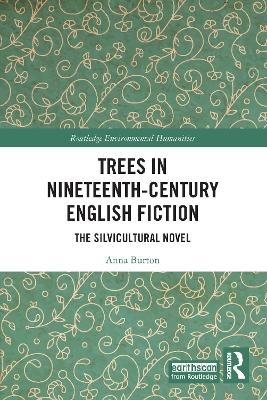
Trees in Nineteenth-Century English Fiction
Routledge (Verlag)
978-0-367-74791-6 (ISBN)
Trees in Nineteenth-Century English Fiction: The Silvicultural Novel identifies the picturesque thinker William Gilpin as a significant influence in this literary and environmental tradition. Remarks on Forest Scenery (1791) is formed by Gilpin’s own observations of trees, forests, and his New Forest home specifically; but it is also the product of tree-stories collected from ‘travellers and historians’ that came before him. This study tracks the impact of this accumulating arboreal discourse upon nineteenth-century environmental writers such as John Claudius Loudon, Jacob George Strutt, William Howitt, and Mary Roberts, and its influence on varied dialogues surrounding natural history, agriculture, landscaping, deforestation, and public health. Building upon this concept of an ongoing silvicultural discussion, the monograph examines how novelists in the realist mode engage with this discourse and use their understanding of arboreal space and its cultural worth in order to transform their own fictional environments. Through their novelistic framing of single trees, clumps, forests, ancient woodlands, and man-made plantations, Jane Austen, Elizabeth Gaskell, and Thomas Hardy feature as authors of particular interest. Collectively, in their environmental representations, these novelists engage with a broad range of silvicultural conversation in their writing of space at the beginning, middle, and end of the nineteenth century.
This book will be of great interest to students, researchers, and academics working in the environmental humanities, long nineteenth-century literature, nature writing and environmental literature, environmental history, ecocriticism, and literature and science scholarship.
Anna Burton is an early career researcher and teaching fellow at the University of Liverpool. Her research interests include long nineteenth-century literature, natural history, nature writing, and the afterlives of the ‘Picturesque’.
Introduction
Chapter One
A Silvicultural Tradition
Single Trees and Remarkable Specimens
From Clumps to Forests: Trees in Combination
Gilpin and the New Forest
A Changing Woodscape: Preservation and Planting into the Nineteenth Century
Chapter Two
Arboreal Boundaries and Silvicultural ‘Improvement’ in the Literary Landscapes of Jane Austen
Silvicultural Dynamism: Arboreal Conversations and Characterisations
Trees, Improvement, and Maintaining Arboreal Boundaries
Chapter Three
The Presence and Absence of Trees in the Writings of Elizabeth Gaskell
The Topographies of Trees in Libbie Marsh’s Three Eras and Ruth
‘delicious air’ and the Green Belt in North and South
Chapter Four
Reading Ancient Trees and Arboreal Strata in The Woodlanders
Arboreal Accumulation and the ‘Billy Wilkins’ Tree
Reading Stratigraphical Woodscapes: The Intersection of Aesthetics and Geology
Chapter Five
‘Such is the Vale of Blackmoor’: Navigating Trees, Memory, and Prospect in Tess of the D’Urbervilles
Topographical Perambulation and the Arboreal Margin
Accumulating Prospects and Retrospective Reflection, Tess as Active Spectator
Conclusion
| Erscheinungsdatum | 20.07.2023 |
|---|---|
| Reihe/Serie | Routledge Environmental Humanities |
| Zusatzinfo | 25 Halftones, black and white; 25 Illustrations, black and white |
| Verlagsort | London |
| Sprache | englisch |
| Maße | 156 x 234 mm |
| Gewicht | 453 g |
| Themenwelt | Geisteswissenschaften ► Sprach- / Literaturwissenschaft ► Anglistik / Amerikanistik |
| Geisteswissenschaften ► Sprach- / Literaturwissenschaft ► Literaturgeschichte | |
| Geisteswissenschaften ► Sprach- / Literaturwissenschaft ► Literaturwissenschaft | |
| ISBN-10 | 0-367-74791-X / 036774791X |
| ISBN-13 | 978-0-367-74791-6 / 9780367747916 |
| Zustand | Neuware |
| Haben Sie eine Frage zum Produkt? |
aus dem Bereich


